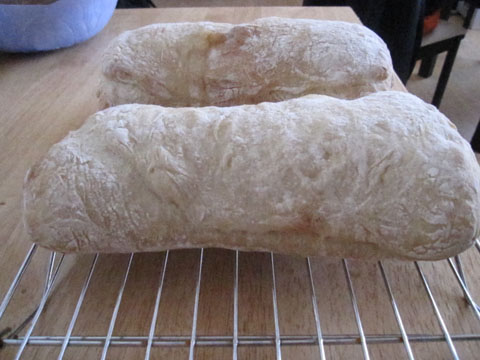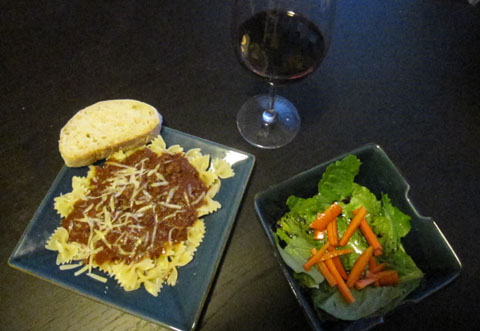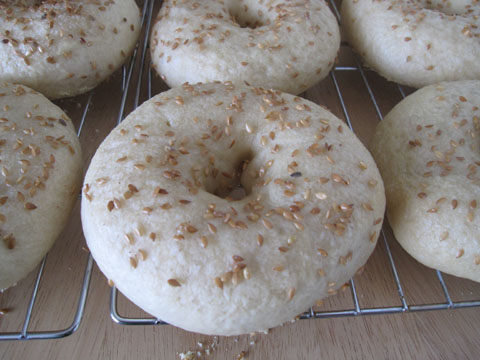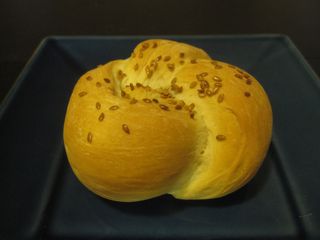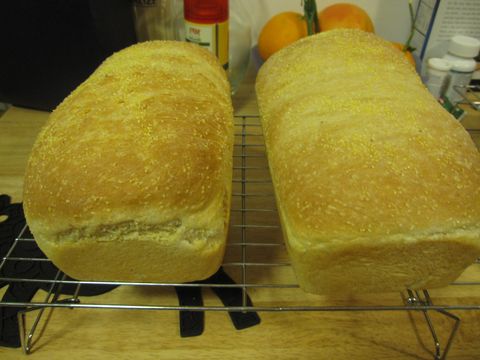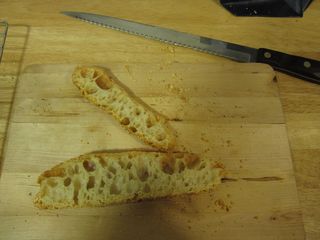
As part of my new found hobby of baking (and the BBA Challenge), I’m trying not to buy store bought bread. Since I had finally used up all the polenta (so couldn’t make the Anadama Bread), I decided to knock off another formula in the BBA Challenge.
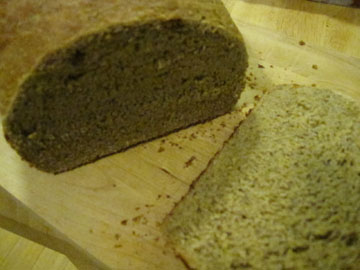
When planning to make the Light Wheat Bread, I decided to get a little adventurous however. I had a bunch of mesquite flour left over from the Mesquite Chocolate Chip cookies (due to a mistake by the mesquite flour company). I figured I’d replace the Whole Wheat flour in the formula with mesquite flour. Other than that, this formula is a pretty typical sandwich bread recipe. Its actually pretty similar to what my grandpa used to make in his bread machine. In addition to the usual suspects of flour, yeast, and water the bread has dry milk and honey (or sugar) to enrich the dough. The mesquite flour gave the bread a very distinct aroma and taste. I used a local sage honey as my sweetener which complemented the mesquite flour quite nicely. The bread definitely had an sweet earthy flavor thanks to the mesquite. It was also denser than I suspect the loaf would have been with whole wheat flour. I don’t think it took anything away from the bread though. It was a fun experiment.


